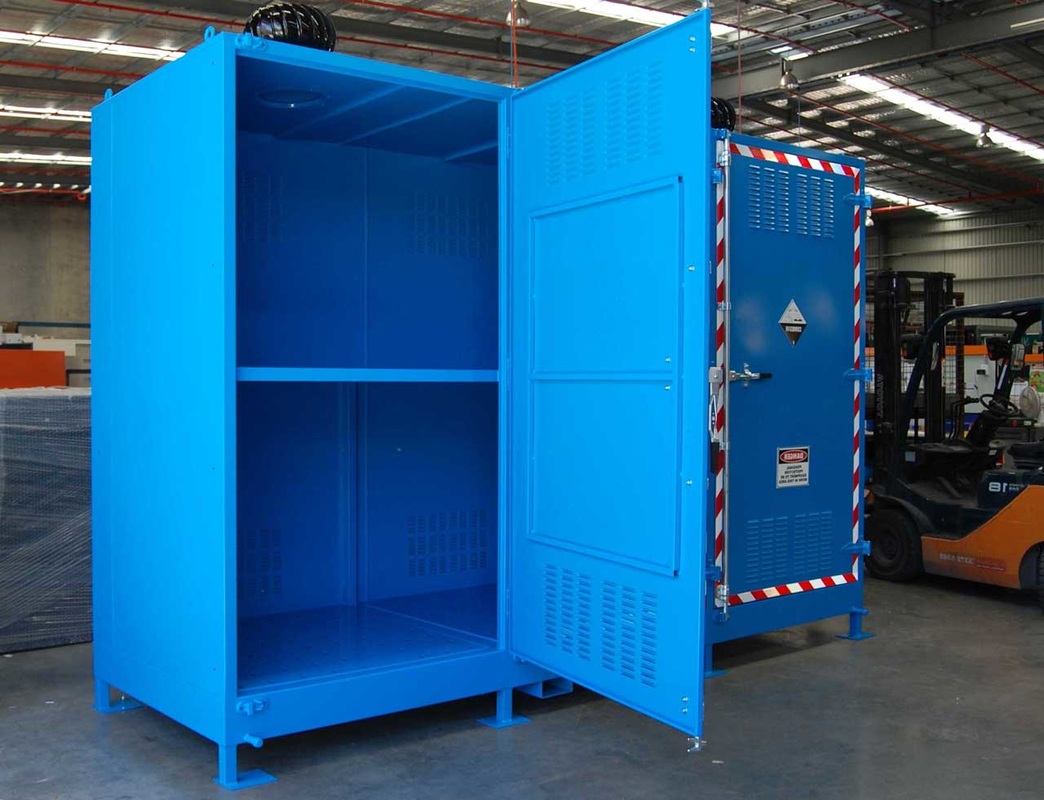Working with corrosive materials means being exposed to various life-threatening dangers. This requires certain safety measures, among which is corrosives storage. Corrosives are hazardous chemicals (acids and bases) that have the power to damage a solid structure. They are toxic, easily flammable and can quickly cause severe destruction of the skin tissue at persons working with these substances.
There are also acids that are water reactive, such as chlorosulfonic acid, sulfuric acid and oxalyl chloride. Furthermore, some of these water reactives feature a pressure build-up hazard, which additionally requires the necessity to safely store corrosive materials. One of the most secure solutions by far are the corrosive storage cabinets.
Where to store corrosive materials?Few general considerations are offered when it comes to storing corrosives safely:
ATTENTION: Never store any type of chemical under the sink, especially if a corrosive. The vapours of these acids and bases will provoke a plumbing-fixture corrosion under the sink.
How to store corrosive materials?
You already know that bases and acids are compatible to each other and they will cause a reaction if they come in contact. This is why they need to be stored in a way that they will be separated by a sufficient distance. Strong corrosive materials have to be stored in a special corrosive chemical cabinet coated with caustic-resistant material. Easy-flammable weak bases, like most of amines, need to be kept in a special flammables cabinet and they should also be properly ventilated in order to reduce the strong odour they produce.
- Corrosive storage cabinets have to be sturdy and placed very low to the floor. When it comes to material, corrosive storage cabinets need to be made out of impervious (non-reactive-with-corrosives materials). Corrosive substances are required to be stored near a proper ventilation system.
- Consider secondary spill trays, like for example, plastic bins, to use them in cases when special storage considerations are necessary. Hence, glacial acetic acids need to be stored in a special flammables cabinet, but there should be also a secondary containment in case of spill.
- Third consideration that should not be neglected is the ventilation of vapours that might escape a container. Although the caps of acids and bases are usually tightly sealed, with time, vapours can slip from the cap of the container, which commonly results in crystal-like forms on the caps of chemical bottles.
ATTENTION: Never store any type of chemical under the sink, especially if a corrosive. The vapours of these acids and bases will provoke a plumbing-fixture corrosion under the sink.
How to store corrosive materials?
You already know that bases and acids are compatible to each other and they will cause a reaction if they come in contact. This is why they need to be stored in a way that they will be separated by a sufficient distance. Strong corrosive materials have to be stored in a special corrosive chemical cabinet coated with caustic-resistant material. Easy-flammable weak bases, like most of amines, need to be kept in a special flammables cabinet and they should also be properly ventilated in order to reduce the strong odour they produce.

